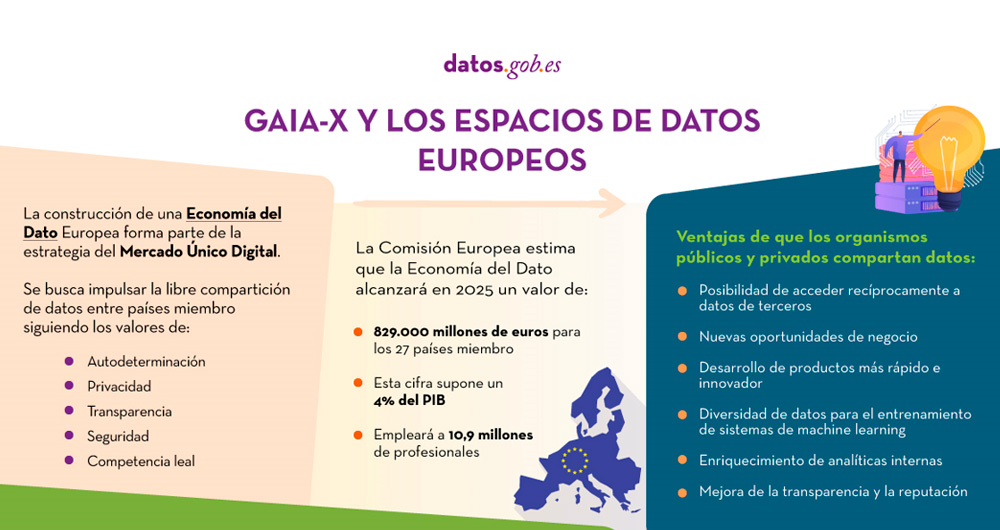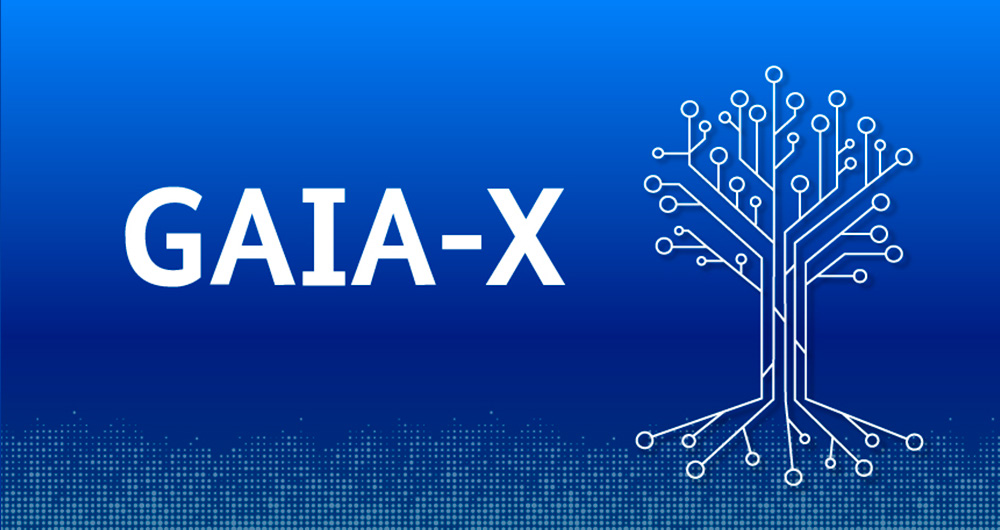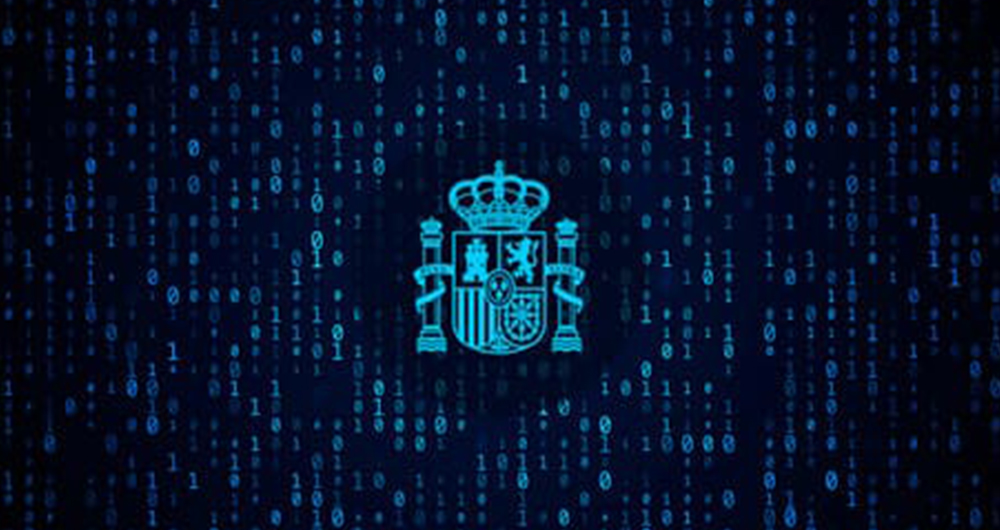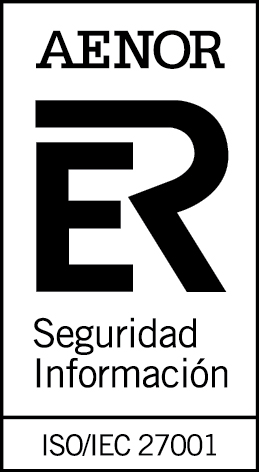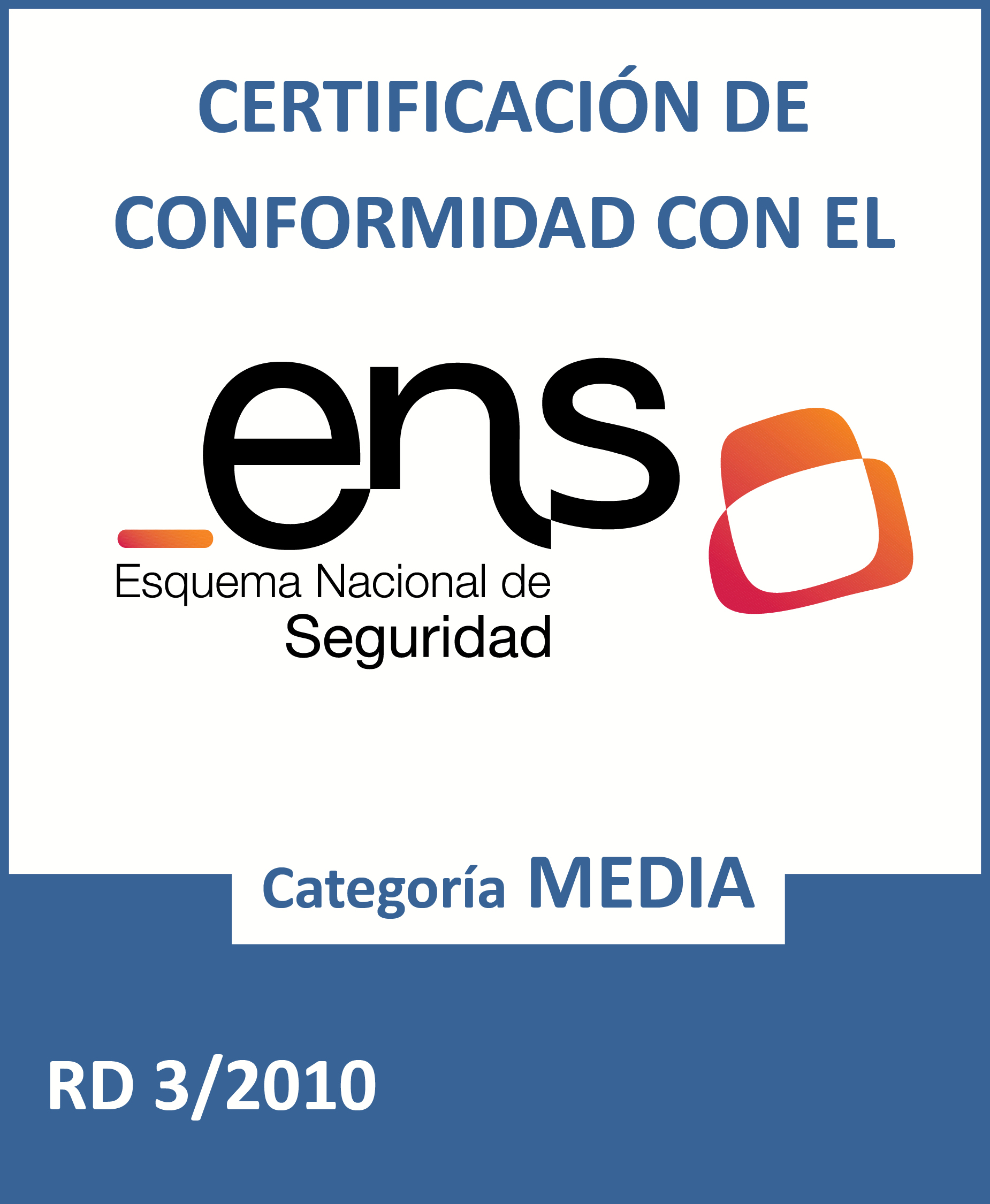Demystifying Gaia-X
Fecha de la noticia: 22-09-2023
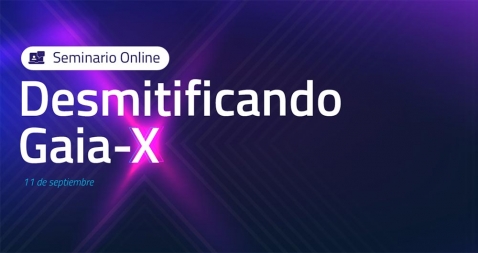
On September 11th, a webinar was held to review Gaia-X, from its foundations, embodied by its architecture and trust model called Trust Framework, to the Federation Services that aim to facilitate and speed up access to the infrastructure, to the catalogue of services that some users (providers) will be able to make available to others (consumers).
The webinar, led by the manager of the Spanish Gaia-X Hub, was led by two experts from the Data Office, who guided the audience through their presentations towards a better understanding of the Gaia-X initiative. At the end of the session, there was a dynamic question and answer session to go into more detail. A recording of this seminar can be accessed from the Hub's official website,[Forging the Future of Federated Data Spaces in Europe | Gaia-X (gaiax.es)]
Gaia-X as a key building block for forging European Data Spaces
Gaia-X emerges as an innovative paradigm to facilitate the integration of IT resources. Based on Web 3.0 technology models, the identification and traceability of different data resources is enabled, from data sets, algorithms, different semantic or other conceptual models, to even underlying technology infrastructure (cloud resources). This serves to make the origin and functioning of these entities visible, thus facilitating transparency and compliance with European regulations and values.
More specifically, Gaia-X provides different services in charge of automatically verifying compliance with minimum interoperability rules, which then allows defining more abstract rules with a business focus, or even as a basis for defining and instantiating the Trusted Cloud and sovereign data spaces. These services will be operationalised through different Gaia-X interoperability nodes, or Gaia-X Digital Clearing Houses.
Using Gaia-X as a tool, we will be able to publish, discover and exploit a catalogue of services that will cover different services according to the user's requirements. For instance, in the case of cloud infrastructure, these offerings may include features such as residence in European territory or compliance with EU regulations (such as eIDAS or GDPR, or data intermediation rules outlined in the Data Governance Regulation). It will also enable the creation of combinable services by aggregating components from different providers (which is complex now). Moreover, specific datasets will be available for training Artificial Intelligence models, and the owner of these datasets will maintain control thanks to enabled traceability, up to the execution of algorithms and apps on the consumer's own data, always ensuring privacy preservation.
As we can see, this novel traceability capability, based on cutting-edge technologies, serves as a driver for compliance, and is therefore a fundamental building block in the deployment of interoperable data spaces at European level and the digital single market.



